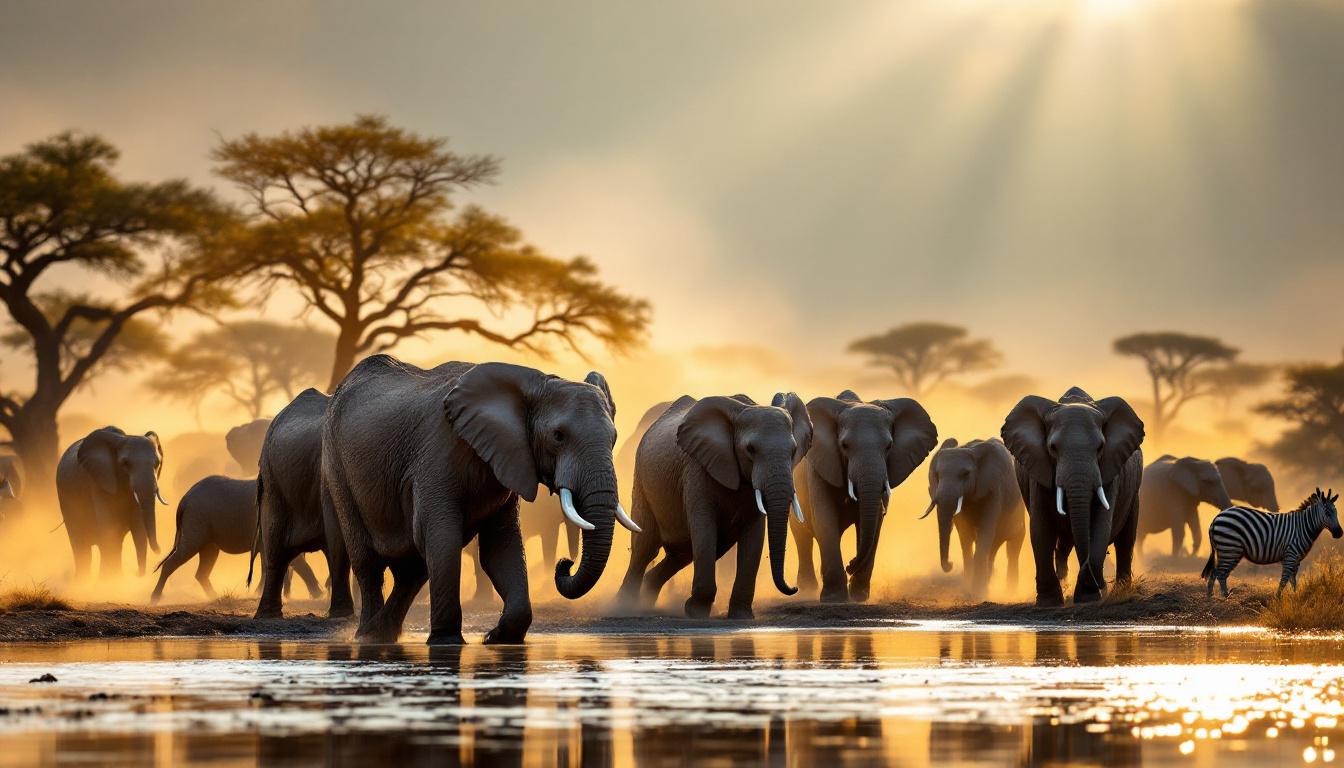Kruger National Park: South Africa’s Ultimate Wildlife Kingdom Where 147 Mammal Species Roam Free
Africa’s wild heart beats strongest in Kruger
Within South Africa’s northeastern corner lies a wilderness sanctuary so vast it would take weeks to fully explore. Spanning nearly 20,000 square kilometers, Kruger National Park represents Africa’s wildlife at its most authentic and accessible. This isn’t just another safari destination—it’s a complete ecosystem where the continent’s most iconic creatures thrive in remarkable density.
“Kruger offers something most wildlife reserves can’t—the chance to witness completely natural behavior across multiple ecosystems within a single park,” explains Thomas Ndlovu, senior ranger with over 25 years of experience. “What makes it special is the freedom animals have to follow ancient migration routes across such diverse landscapes.”
Winter delivers the ultimate wildlife spectacle
While beautiful year-round, Kruger reveals its true magic during the dry winter months (May-September). As water sources dwindle, animals congregate around remaining waterholes, creating wildlife gatherings of extraordinary density. This period transforms ordinary game drives into moving wildlife documentaries, with predator sightings dramatically increasing.
The southern section near Skukuza and Lower Sabie camps offers the highest concentration of big cats, while the central grasslands around Satara provide unparalleled elephant and buffalo viewing. For those seeking solitude with their wildlife encounters, the northern region delivers Kruger’s most pristine wilderness experience.
Beyond the Big Five: Kruger’s hidden treasures
While most visitors fixate on lions and elephants, Kruger rewards those who look deeper. The park houses over 500 bird species, including the magnificent martial eagle and the technicolor lilac-breasted roller. Smaller mammals like honey badgers and bat-eared foxes often provide the most memorable encounters.
For travelers seeking cultural immersion alongside wildlife, ancient cultural sites like Thulamela and Masorini offer fascinating glimpses into the region’s human history spanning thousands of years.
Self-drive safaris: the ultimate freedom
Unlike many African reserves requiring guided tours, Kruger allows self-drive exploration on well-maintained roads. This independence creates extraordinary opportunities for discovery and personal connection with the landscape. Early risers often enjoy magical moments alone at misty waterholes as the first light breaks across the savanna.
“There’s nothing like driving yourself through Kruger at dawn,” shares wildlife photographer Maria Collins. “You set your own pace, stop when something catches your eye, and experience total immersion in the environment—it’s meditative.”
Night drives reveal Kruger’s secret world
As darkness falls, Kruger transforms. Book a guided night drive to witness nocturnal specialists like leopards, genets, and porcupines emerging from daytime hiding spots. The experience of spotting reflective eyes in the darkness creates an entirely different dimension to wildlife viewing, reminiscent of traditional desert safaris but with greater diversity.
Remarkable accommodations for every style
Kruger offers lodging ranging from basic camping to luxury lodges. The park’s traditional rest camps provide affordable rondavels (round huts) and cottages with essential amenities and protective fencing. For those seeking higher comfort, private concessions within and bordering the park deliver five-star experiences without sacrificing authenticity.
The camps themselves often attract wildlife, with elephants, hyenas and hippos regularly visiting perimeter fences. Unlike mountain retreats where wildlife remains distant, here the boundaries between human and animal domains blur wonderfully.
Hidden gem: Pafuri’s fever tree forest
Kruger’s far north contains its most magical landscape—Pafuri’s fever tree forest. These ethereal yellow-trunked trees create a golden woodland reminiscent of mythical treasure mountains. Visit at sunrise when light filters through the canopy, illuminating elephant herds moving silently between the luminous trunks.
Conservation success against impossible odds
Kruger represents one of Africa’s great conservation triumphs. Despite relentless poaching pressure, the park maintains healthy rhino populations through innovative anti-poaching measures. This success story mirrors other remarkable survival stories throughout history, demonstrating human ingenuity in preservation.
Kruger’s wild heart continues beating strongly, offering visitors authentic wilderness immersion unlike anywhere else on earth. Here, nature’s ancient rhythms continue uninterrupted, inviting travelers to reconnect with something profoundly essential to the human experience—wild Africa, just as it has always been.
